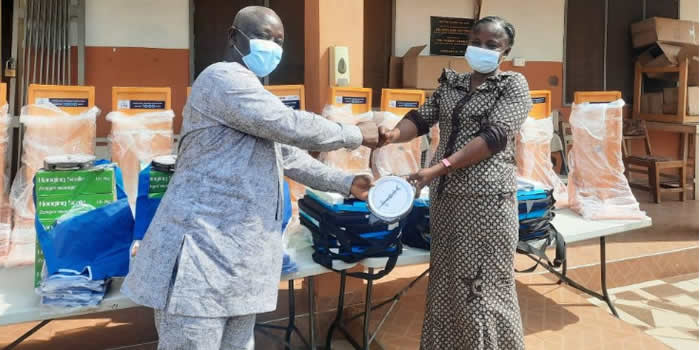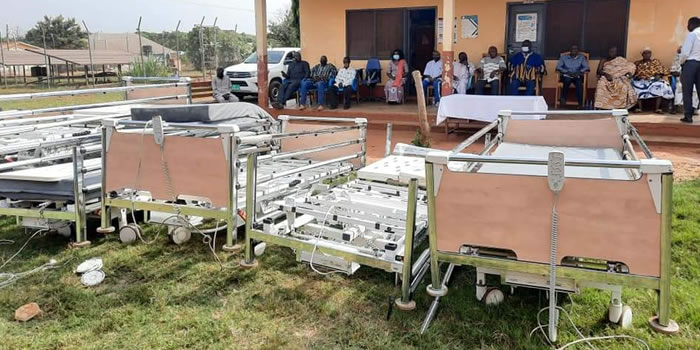

Health is important and access to health care is a basic human right. The health of the people in the district is of vital importance because the healthier a community is, the higher the potential for development. The district has one (1) Health Centre, two (2) Rural Clinics and two (2) Private Maternity Homes, which provide varied services to the people. There is only one (1) Medical Assistant in the district with other medical staff. Doctor-patient ratio in the district is very poor since the district cannot boast of a single doctor
Accessibility to Health Care
In the Analysis of accessibility to health care, two factors are considered, namely; physical accessibility and socio-economic accessibility. Physical accessibility takes into account the time spent and the distance covered to get to a health facility. It also considers the distribution of the health facilities in the District.
The survey estimated an average of two hours to access a health facility in the District. This obviously is not a good situation compared to the acceptable time of 30 minutes in Ghana. This can be attributed to the poor road network in the District and the inadequate means of transport. in some cases, non-motorised means of transport like bicycles are used to transport patients to health facilities.
In terms of economic accessibility, the ability of people to pay for health service was the major consideration. By the introduction of the Mutual Health Insurance Scheme, economic accessibility to health care is quite high in the District. OPD attendance has increased from an average of 26 in 2005 to 40 in 2006 (i.e. 53.8%) as a result of the scheme. Even through some success is being made in the education, there is need to intensify the campaign so that more people can have access to health care through the scheme.
Top Ten Diseases
The highest and persistent cause of OPD attendance and death in the district is malaria, followed by ARI, Skin disease and Pneumonia in 2006, as indicated in table 2.15. The table below shows the top ten diseases recorded by the health institutions. Malaria is caused by poor environmental sanitation e.g. chocked gutters, unkempt refuse dumps, bushy environment and poor eating habits from infancy to adulthood. The District Health Management Team, in collaboration with the Environmental Health Division of the District Assembly, are improving sanitation in the district through regular health education on FM Stations, the promotion of treated mosquito bed nets and exclusive breastfeeding and weaning.
Key Development Problems
- Inadequate staff for the health facilities
- Lack of doctors in the health facilities
- Inadequate equipment in health facilities
- Lack of residential accommodation for staff
Potentials
Willingness of private sector to participate in health delivery
Increasing number of S.S.S. graduates enrolling in health institution Evenly distributed health facilities in the District
HIV/AIDS Situation in the District
One of the sensitive issues receiving the attention of the world in contemporary times is HIV/AIDS. The effect of the pandemics transcends the health and Social to affect economic development as well. Focus on the prevention of the diseases is therefore high on the National agenda under the GPRS II.
The HIV prevalence rate in the District is estimated at 2.7%. The focus is therefore to prevent new infection of HIV and STIs in general. Due to lack of data on the HIV/AIDS situation in the District, the analysis considered the level of knowledge about the pandemic. The table below shows the level of knowledge of a sampled group of people.
In response to the threat of inadequate knowledge on the pandemic, a number of NGOs have collaborated with the District Health Management team and the District Assembly to carry out sensitization programmes and projects on the disease.
Date Created : 11/17/2017 1:46:00 AM











 facebook
facebook
 twitter
twitter
 Youtube
Youtube
 +233 593 831 280
+233 593 831 280 0800 430 430
0800 430 430 GPS: GE-231-4383
GPS: GE-231-4383 info@ghanadistricts.com
info@ghanadistricts.com Box GP1044, Accra, Ghana
Box GP1044, Accra, Ghana